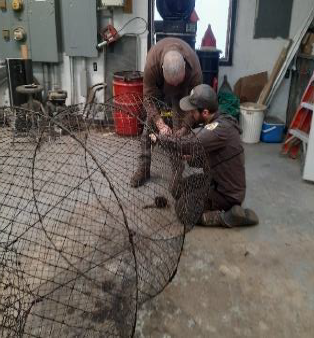Genoa National Fish Hatchery’s new CPR (Conservation, Propagation, and Restoration) trailer is on the move. Genoa National Fish Hatchery is known for producing tens of thousands of lake sturgeon on an annual basis. The juvenile sturgeon produced at the hatchery every year are the result of multiple spawning events in as many as four states. On average, staff from Genoa NFH log over four thousand miles a year behind the steering wheel to accomplish lake sturgeon spawning and egg collection activities. Often, spawning activities take 6 to 8 hours to complete and then there’s the drive back to the hatchery to place the eggs on the incubation unit until they hatch. Often this drive can take up to 17 hours, in addition to spawning activities. This new trailer will allow Genoa NFH staff to pull over when the number of work and/or driving hours are met and plug the trailer directly into an electrical outlet found at any hotel or rest stop. Photo: Lake sturgeon eggs incubating in the egg jar battery in the new CPR mobile trailer. Credit: USFWS
So, what is it and how does it work? The CPR trailer is an enclosed, self-contained mobile egg jar battery complete with McDonald hatching jars, a recirculating pump, chiller unit to keep eggs cool, and its own Wi-Fi monitored alarm system. The jar battery can hold 18 egg hatchery jars while maintaining a temperature range of 11 C to 18 C. If the temperature range or flow rates deviate from set parameters, the alarm system will call out to hatchery staff. The mobile unit also includes a generator which can power the trailer while staff is driving or when power is not available.
The new CPR trailer is breathing new life into lake sturgeon egg collection and incubation, but its use will likely be expanded to include the many species the hatchery collects eggs from every year. This mobile unit will lead to better egg success and more importantly, safer for the hatchery staff. By: Craig Bockholt

Photo: Lake sturgeon eggs incubating in the egg jar battery in the new CPR mobile trailer. Credit: USFWS








